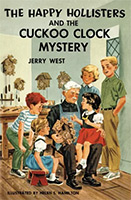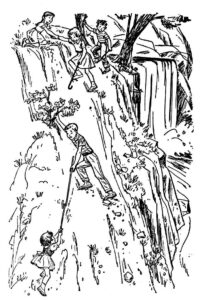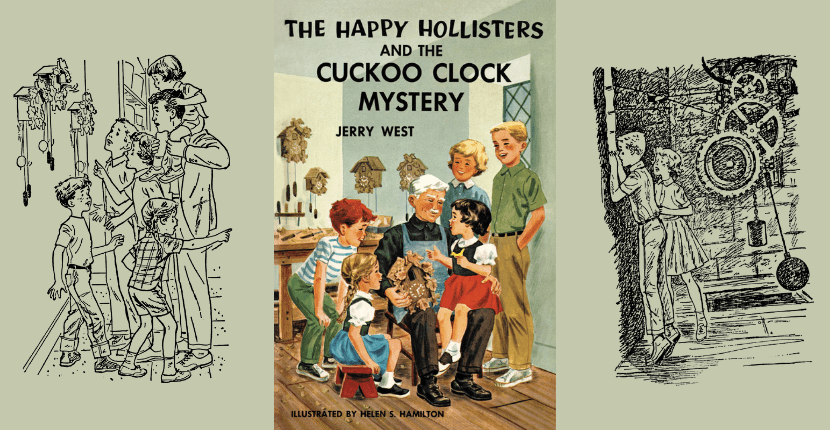The History of the Cuckoo Clock
Every autumn, beer fans from around the world flock to Munich, Germany, for Oktoberfest, a famous celebration that features parades and festivals, traditional German attire, and, of course, beer. But Germany isn’t just for beer drinkers! As the Hollister family learns when they visit the German town of Triberg in The Happy Hollisters and the Cuckoo Clock Mystery by Jerry West, it is also the birthplace of the cuckoo clock.
Like Oktoberfest, the history of the cuckoo clock begins in Bavaria, which is home to cities like Munich and Nuremberg. In the 1630s, Bavarians were introduced to clocks by travelers from

Bohemia. This “new” method of telling time was an upgrade from old-fashioned hourglasses and sundials, and the use of clocks caught on quickly. Intrigued, craftsmen started to make their own clocks, and the industry gradually moved to the neighboring state of Baden-Württemburg where the Black Forest region, or Schwarzwald, provided an ample supply of wood.
The first Black Forest clocks were praised for their elaborate and intricate designs. They typically depicted hunting scenes, images of small animals or other natural features, or designs of the picturesque houses found in the Black Forest. However, the cuckoo design we love today didn’t come along until later, invented in the 1730s by clockmaker Franz Anton Ketterer (1676–1749). Inspired by the sound of an organ in his village’s church, Ketterer built upon the traditional Black Forest design and used mechanisms and whistles to create a small bird, which would emerge from a hole in the center of the clock and sound its distinct “cuckoo” call each hour. Over the years, other clockmakers began making their own versions of Ketterer’s cuckoo clock, and it quickly became the most popular and recognizable Black Forest clock design.

Today, cuckoo clocks and other types of Black Forest clocks still play an important cultural role in Germany. As Pete, Pam, Ricky, Holly, and Sue Hollister observe when they visit Triberg in The Happy Hollisters and the Cuckoo Clock Mystery, clocks of various styles adorn many of the homes and buildings in the area. Today’s tourists can also check out the Schwarzwald Museum in Triberg, where they can learn all about Black Forest clocks, cuckoo clocks, and what life was like back when Ketterer built his first clock.
If The Happy Hollisters and the Cuckoo Clock Mystery inspires you to take a trip to Triberg in the Black Forest, there are plenty of things to do after learning about cuckoo clocks at the Schwarzwald Museum. When Happy Hollisters author Andrew Svenson (aka Jerry West) visited to do research for this book, he stayed at the Hotel Wehrle, which was opened in 1707 and is still in operation today. An avid hiker, he explored the magnificent Triberg Waterfalls, the scene of an exciting episode—a literal cliffhanger—in the book.
In addition to Triberg, the Black Forest region is filled with postcard-perfect spots like the reconstructed medieval town of Freiburg and Baden-Baden, which is known for its relaxing and restorative thermal springs. A trip to the Black Forest is incomplete without a visit to one of the many pastry shops for a slice of Schwarzwälder Kirschtorte (Black Forest Cherry Cake), a traditional dessert combining rich chocolate with cherries and cherry liqueur (Kirsch). After your cake, you may need to take another hike to work off the calories, and of course, you might see more cuckoo clocks along the way!
by Libby Svenson Kennedy

